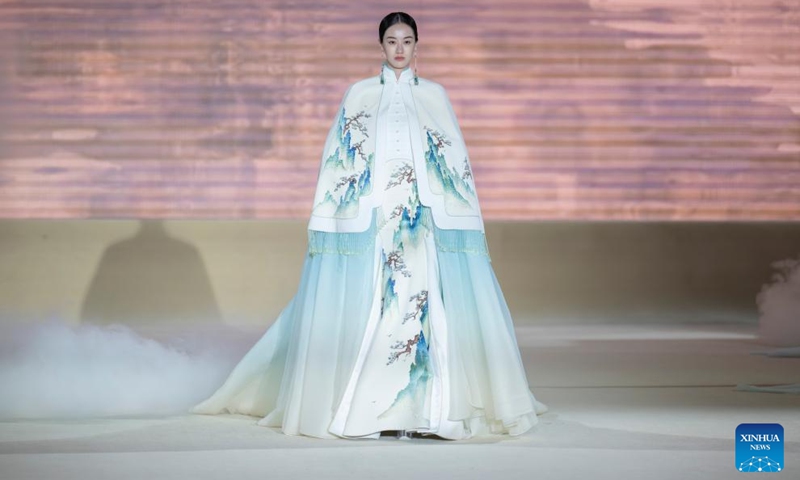LIFE / TRENDS
China Fashion Week highlights wedding attire, intangible cultural heritage
Traditional aesthetic feast
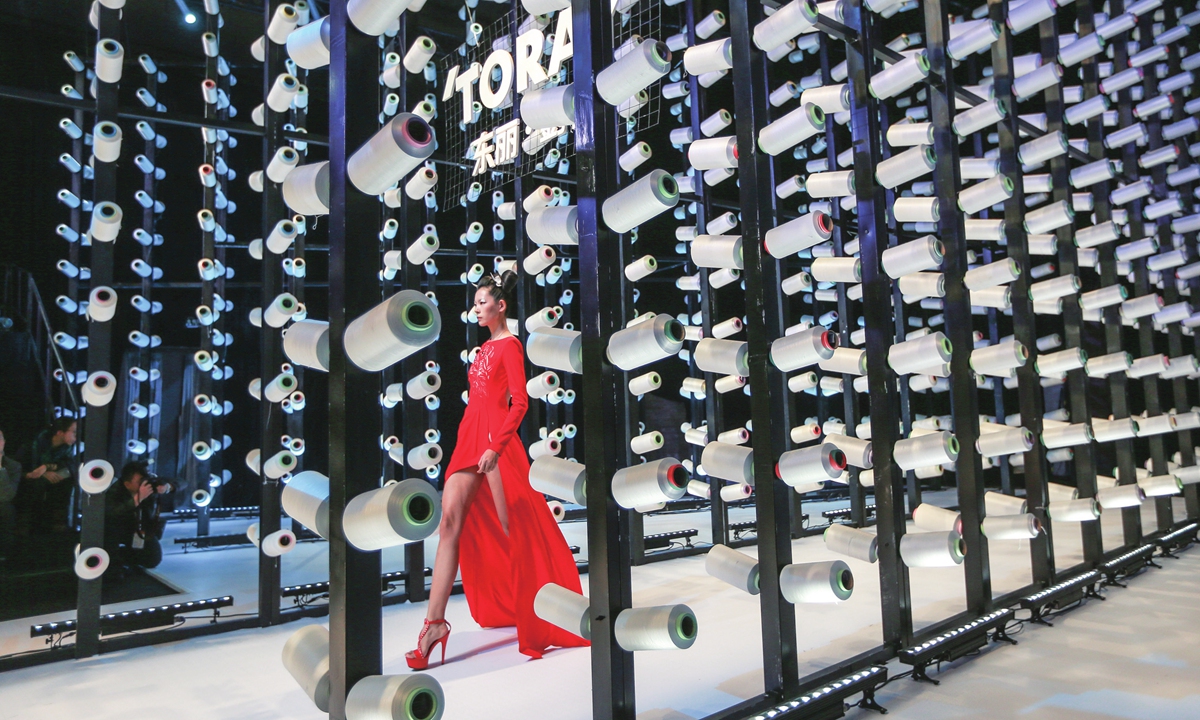
Runway shows at the autumn/winter 2024 (A/W24) China Fashion Week which kicked off onMarch23, 2023 Photo: Courtesy of Qi Lianmin
Models adorned in various traditional Chinese wedding dresses gracing the runway marked the beginning of the autumn/winter 2024 (A/W24) China Fashion Week, which kicked off in Beijing on March 23.
This edition of China Fashion Week focuses on themes such as Chinese aesthetics, innovation in intangible cultural heritage, fusion of national trends, green sustainability, digital fashion, and intellectual property.
Over 130 fashion events, including fashion shows, trend releases, trade exhibitions, thematic exhibitions, high-end forums, and professional competitions, are scheduled to unfold at fashion landmarks such as Beijing's 751D·PARK until Sunday.
Hosted by the China Fashion Association, this edition of the A/W24 China Fashion Week is deeply integrated with China's textile and apparel industry and key academic institutions, attracting more than 100 fashion brands and nearly 200 designers.
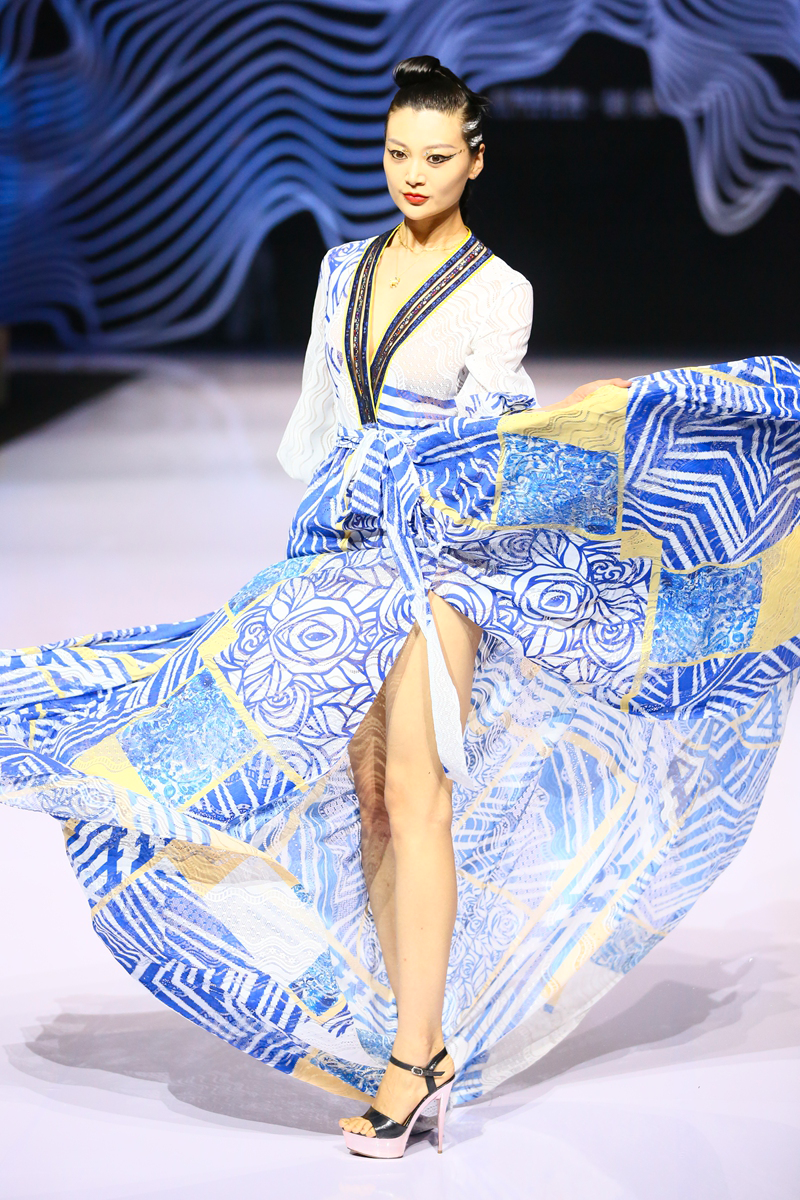
Photo: Courtesy of Qi Lianmin
Ethnic styles
Chinese-style clothing extends beyond the traditional elements of the Han ethnic group, and encompasses the distinctive features of various ethnic minorities . Designers often draw inspiration from traditional costumes, embroidery, and patterns from all over China, integrating the cultural characteristics of different ethnic groups into their clothing designs, showcasing a rich tapestry of ethnic charm.
The attire of the Miao ethnic group, characterized by its rich and vibrant embroidery, colorful fabrics, and silver accessories, epitomizes the elegance and unique cultural essence of the Miao people.
"Miao women's clothing often features shoulder pads. These pads, typically round or square, woven from strips of cloth or thin ropes, are inserted at the shoulders of garments to widen them and enhance the overall silhouette," explained Yuan Xingqi, a young ethnic minority fashion designer from Beijing, to the Global Times.
For Miao women, long skirts are a staple, extending down to the ankles or even further. These skirts are often adorned with exquisite embroidery and pleats, showcasing the elegance and sophistication of Miao women.
"This unique ethnic outline, infused with a modern touch, has been incorporated into the creations of many domestic and international fashion designers," Yuan added.
These aesthetic elements have been incorporated in traditional Chinese wedding dresses as well.Designers draw inspiration from Miao silver and wax dyeing, various needlework techniques, patterns inspired by Chinese landscapes, aesthetic expressions of patterns, styles, and artistic conceptions, as well as craftsmanship such as printing, jacquard weaving, three-dimensional embroidery, and knitwear hollowing.
One of such examples has been the opening show, presented by the domestic brand Loolayy, which incorporated cultural features of the Miao ethnic group, showcasing a blend of tradition and innovation in their newly designed traditional red wedding attire.
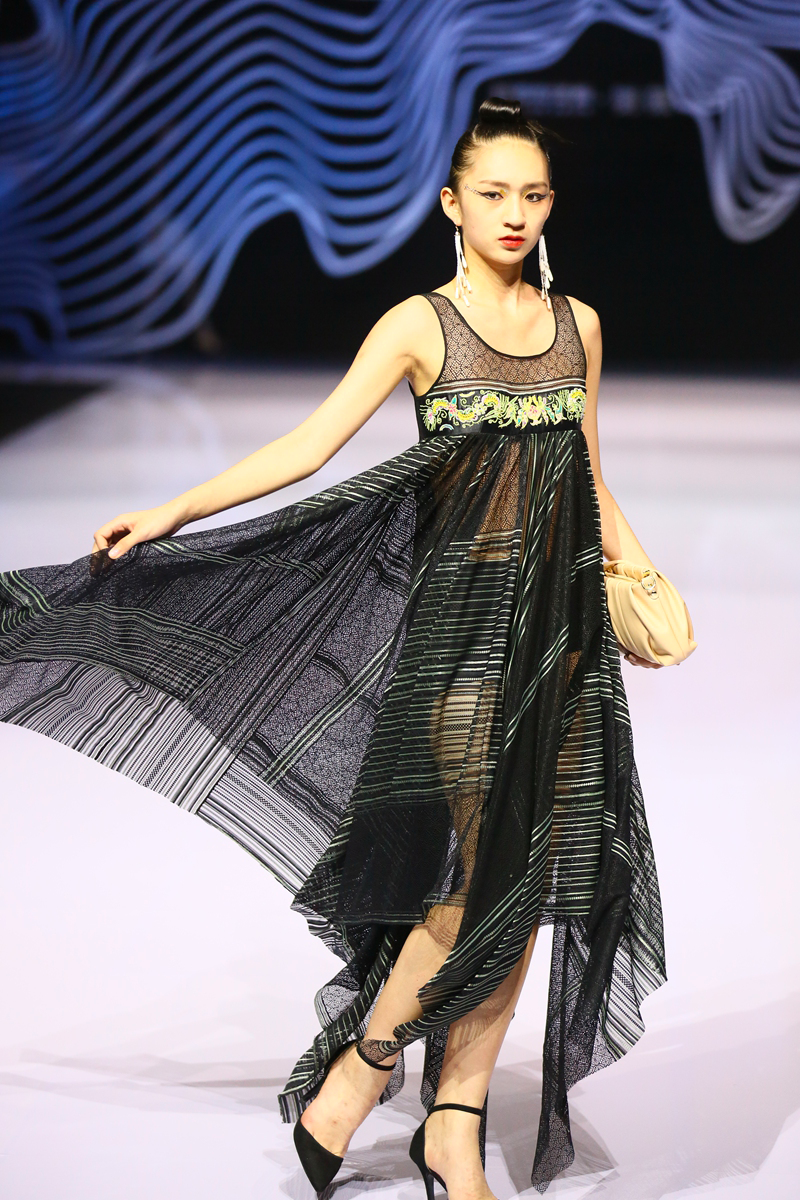
Photo: Courtesy of Qi Lianmin
A grand event
Loolayy is one of the brands that has blended traditional Chinese elements and the innovation of intangible cultural heritage on the stage.
On the platform of the year 2024's China Fashion Week, dozens of traditional Chinese cultural elements such as the Liangzhu culture, the Sanxingdui culture, the Five Elements philosophy, the ancient book Classic of Mountains and Seas, classical poetry, as well as traditional crafts such as Beijing embroidery, Suzhou embroidery, the ethnic Miao embroidery, indigo dyeing, plant dyeing, bamboo weaving, paper cutting, and shadow play, are also stepping onto the stage of Chinese fashion.
This event aims to promote international fashion and cultural interaction, revitalize China's contemporary fashion industry, and enhance the new high quality production of China's fashion industry, according to Xinhua News Agency.
A spokesperson for China Fashion Week told the media that this season's fashion week, will also launch the digital fashion ambassador "Phoenix" and release 51 sets of digital fashion.
Nine digital fashion designers will showcase the entire process of digital fashion production, integrating artificial intelligence technology.
In addition, this edition of Fashion Week has launched exclusive fashion sections such as Shandong Day, Xiamen Day, and Beijing Institute of Fashion Technology Day for the first time, allowing important industrial belts and design institutes in China to become popular hits.
The event also collaborates with important industry clusters such as Shengze in Jiangsu Province and Qinghe in Hebei Province, known as the China's "Silk Capital" and "Cashmere Capital" respectively, to showcase the results of cross-industry cooperation among premium production bases, outstanding designers, and local brands.
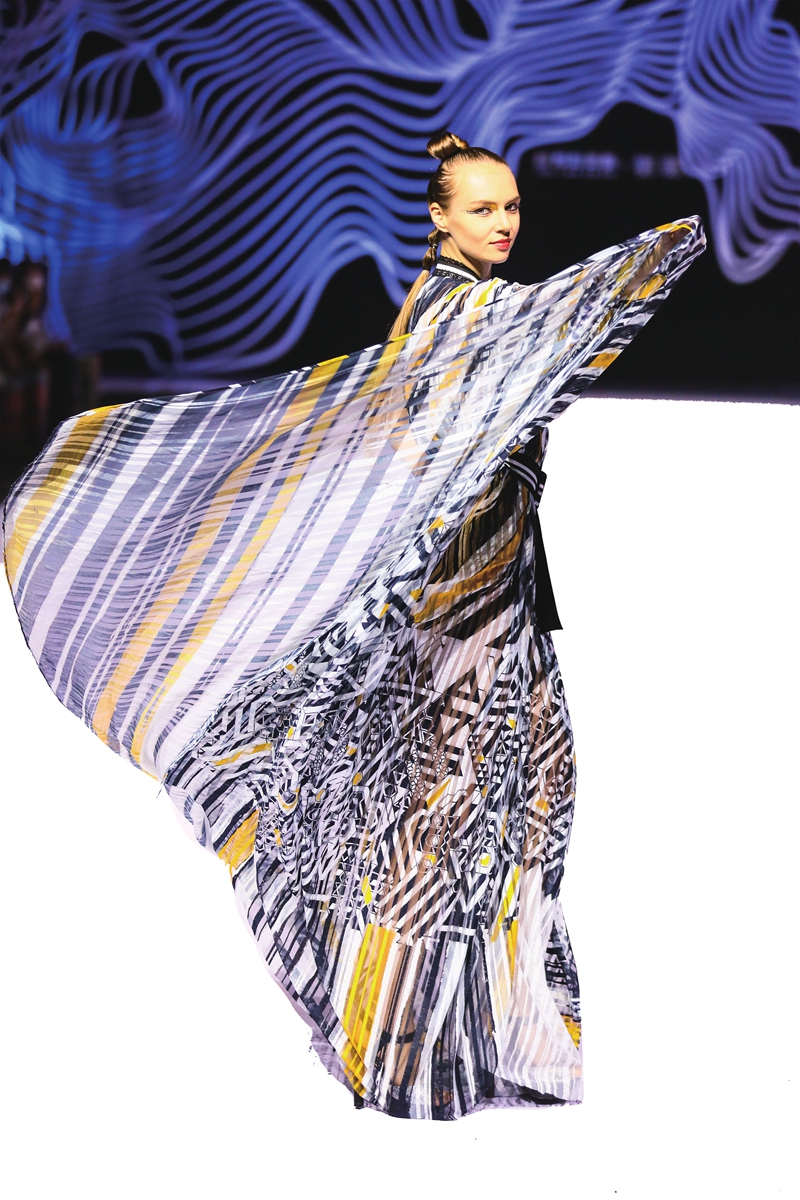
Photo: Courtesy of Qi Lianmin
Growing popular elements
In recent years, Chinese-style fashion aesthetics have been gaining popularity both domestically and internationally. One prominent trend is the revival and innovation of traditional elements. Designers have innovated based on traditional attire by infusing ancient elements into modern designs, creating captivating Chinese-style clothing.
One classic example of this trend is the resurgence of the mamianqun, or the horse-face skirt, representing a fusion of traditional elements with modern design concepts. Originating from ancient Chinese traditional clothing, the horse-face skirt is renowned for its unique tailoring and patterns. In recent years, designers have reinterpreted and improved upon the horse-face skirt, incorporating fashionable elements and personalized designs to better suit the demands of modern life and fashion trends, making it one of the hot items in Chinese-style clothing.
The enduring popularity of the horse-face skirt and Chinese aesthetics continues to inspire fresh and surprising interpretations on the runways.
Not only are new styles and silhouettes being created on the catwalk, but Eastern influences are also prevalent in exhibitions. Two art exhibitions, Emerald Shadow: Red Capital's New Advocacy of Chinese Aesthetics and Colorful Trailing Skirts: Selected Images and Innovative Design Works from the "Most Beautiful Chinese Attire Series: Horse-Face Skirt", are presenting more professional perspectives to satisfy the public's imagination of Eastern aesthetics.
